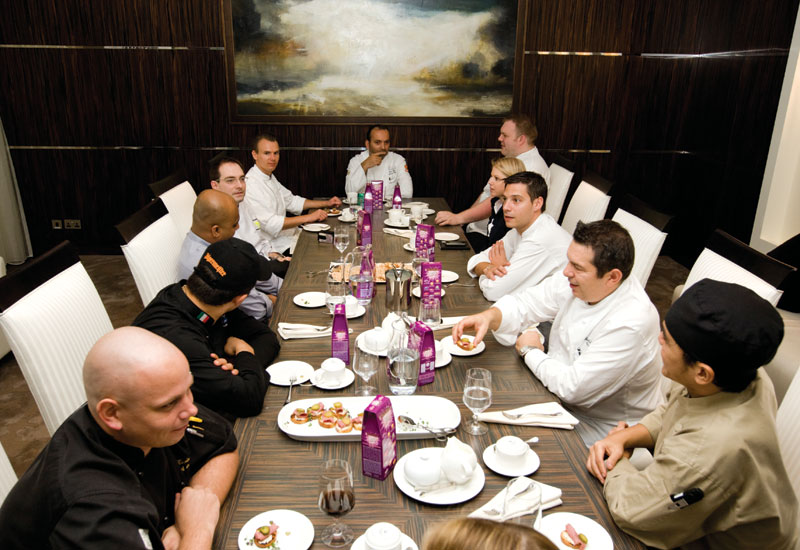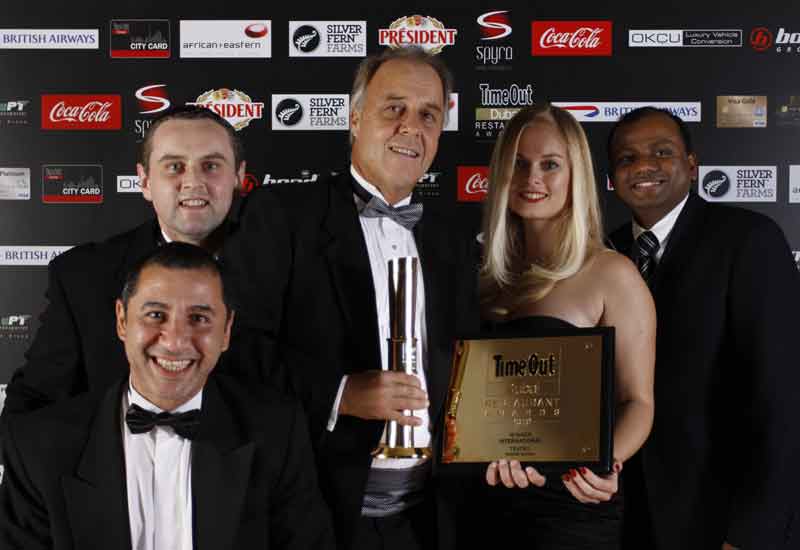 The group discusses menu challenges in the private dining room of The Cavendish restaurant, at Bonnington Jumeirah Lakes Towers.
The group discusses menu challenges in the private dining room of The Cavendish restaurant, at Bonnington Jumeirah Lakes Towers.
For what reasons might you bring in a new menu?
Eicke Christian: Of course there are seasonal patterns, and perhaps if you have non-performing elements a change is advisable, but there’s also the fact that you need to retain an element of surprise; you need to keep bringing in new items, otherwise your guests get bored. You need to keep the menu fresh, especially if you’re looking to build a strong repeat clientele.
It’s all very well to continue doing something you’re good at, but if it continues along exactly the same path, one day someone will copy you and do it better, and then you’re out.
Antonio Dominicis: But it can be difficult to make a change, because guests will come in and ask ‘where has this gone?’ So when I change things, I make sure I keep a few of the favourite items.
Changing the menu does depend on your guests; are they ready and willing to make this change? Will your new offering suit their needs? It’s not just about what you want.
Prud’homme: The food must also tie in with other factors. It may not even be the most important draw in certain restaurants.

Advertisement
What are the key challenges you face when it comes to developing a new menu?
Gagliardi: Vendor consistency — what you can get regularly. I can’t put something on the menu if they can’t guarantee delivery.
I’ve already got rid of three vendors at this point, good ones too, but if they can’t get me that same product I’ll have to change the menu, because I can’t use a supplier who promises me something that doesn’t turn up until two weeks later. Unfortunately that scenario is constant in this market.
Lupton: A main part of my day is making sure I have the produce for that night’s service — and I do sometimes end up running down to the shops at the last minute to buy extra items because they haven’t arrived, just to make sure the menu’s on.
Gagliardi: In other parts of the world suppliers are hungry for business, but the way the mentality has been here, suppliers are very laid back. Even now, in this climate, you can place an order for various products and they won’t tell you if they haven’t got something; you’ll just find out it’s not there when the order turns up.
Dominicis: In other regions, you have suppliers knocking at your door all day long pitching their wares. Here, if you don’t call, they don’t come.
Gagliardi: You’d think it would have become a buyer’s market in the current economic state, but that’s simply not the case.
Zain Sidhu: I agree that building up a solid relationship with a supplier can be tough; and it’s tricky because both parties need each other. The chefs need consistency on a daily basis, and if your supplier can’t deliver that on a daily basis you’re in a tricky position.
Unfortunately, if items are coming in from abroad — as is often the case in this part of the world — sometimes there is a situation with transport or the weather and a shipment simply does not arrive on time.
Gagliardi: I think frustrations have got the better of most of us after about six months. You don’t want to fight, you just want to focus on getting the products that you need for the menu, getting it done right and done well. You have to adapt; it’s not worth the aggravation not to. That does perhaps mean you have to compromise on what you put on your menu, but it does not mean you compromise in any way regarding quality. I won’t serve it at all if I can’t do it right.
Lupton: I’m quite lucky because I’ve just got dinner at an à la carte restaurant to look after, and that’s my only concern: that the menu’s full and the restaurant’s got everything it needs. But even then it’s not easy and you do have to fight with suppliers quite a lot. When I arrived here it took me six months to get used to how things worked, six months’ fighting to improve it, and now slowly we are seeing things get better. But it’s still way behind other places.
Prud’homme: But there are good and bad things about everywhere you work in the world; if it wasn’t this challenge, it’d be something else.
Wherever you work, you have to establish good relations with your supplier for your menu to work, and there has to be give and take on both sides.
Sidhu: I think you have to give suppliers certain targets to achieve, and then take care of them in return. I’m not talking financially, but rather by letting them know they’re your preferred supplier.
Of course, you’re going to have number two and number three as back-up, but if a supplier knows he is your number one choice as long as he gets everything to you on time, that’s a good incentive. It’s about building up a strong relationship and one that is based on trust.









 Search our database of more than 2,700 industry companies
Search our database of more than 2,700 industry companies









